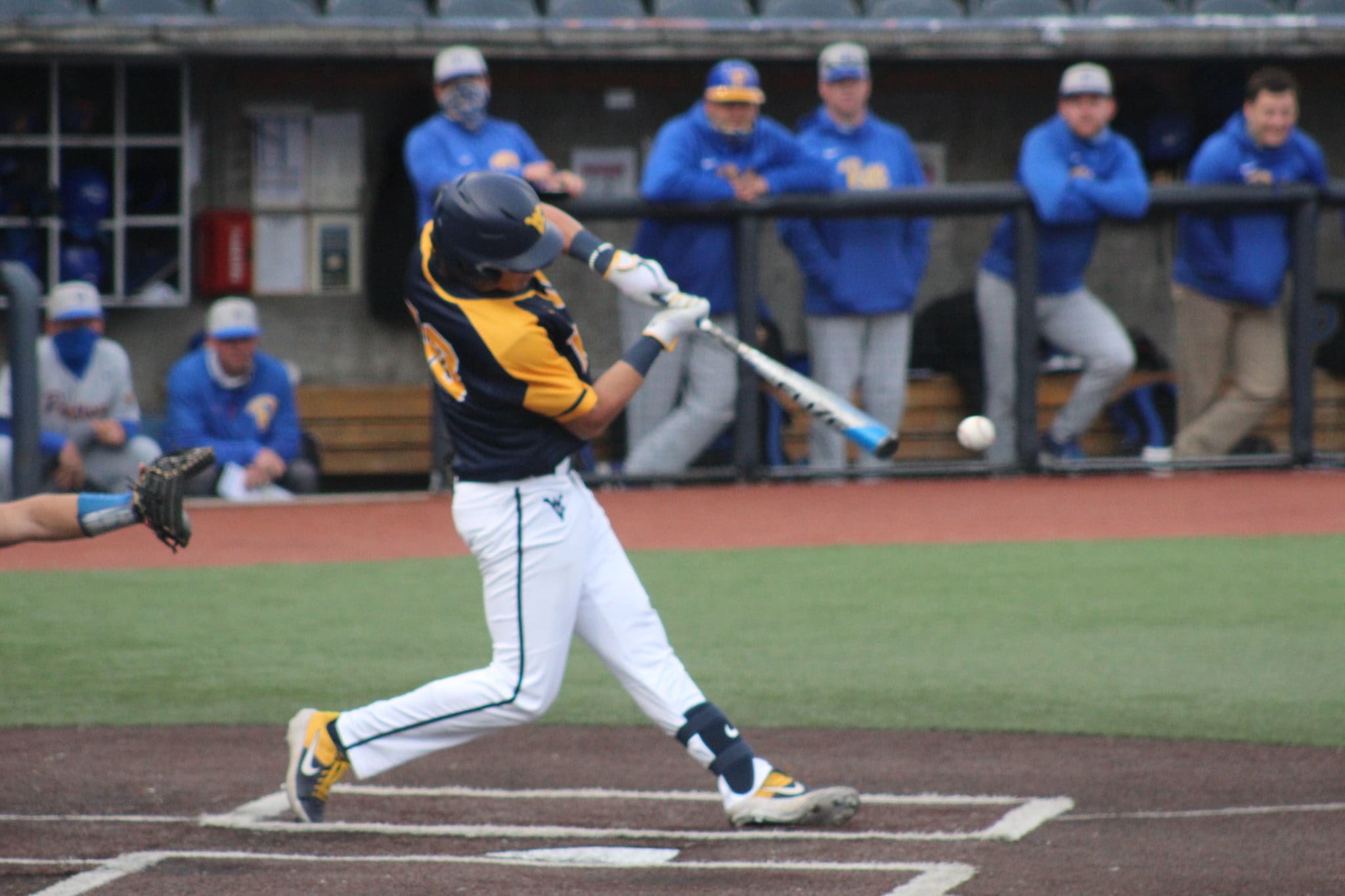WVU Baseball
Young Hitters Show Promise for the Future of WVU’s Offense

2021 was an unusual season for West Virginia baseball in a number of ways. Aside from all the COVID protocols, schedule changes and a couple of in-season pauses, one of the strangest thing about this year’s team was that, despite having a veteran-laden roster, the Mountaineers gave substantial playing time to a number of underclassmen/
“This has been a year where you’ve had to play some guys you wouldn’t normally have had to play,” WVU coach Randy Mazey said during the season. “It gives you a much better idea moving forward of what you’ve got.”
Between injuries and COVID protocols, plenty of underclassmen were able to accumulate at-bats at the plate or innings on the mound. Offensively, with proven veterans like catcher Paul McIntosh, second baseman Tyler Doanes and left fielder/first baseman Hudson Byorick graduating, the increased playing time for underclassmen could pay dividends for WVU’s offense moving into the future.
1B/3B/C Matt McCormick
After a promising debut in 2020, McCormick was one of WVU’s best hitters this season by several measures. He led the team in doubles (15), RBI (30) and total bases (90) and finished second in hits (52) and home runs (seven). He also showed flexibility in the field, spending time at first base, third base and behind the plate.
A draft pick out of high school, McCormick might not have too many more years at WVU before he turns pro, but he has already solidified himself as one of the biggest threats in the Mountaineer lineup.
OF Victor Scott
Like McCormick, Scott had his true freshman season cut short by COVID in 2019. Mazey has often talked about Scott’s potential to be a start player for WVU. While Scott had shown that talent in the field and on the bases from day one, it was not until the second half of this season when he began to turn things around at the plate.
“He made an adjustment with his swing about three weeks ago,” Mazey said near the end of the year. “I told him a day after he made the adjustment, this could be the turning point in his college career. In the last three or four weeks, Victor’s starting to show that he’s getting ready to turn into the player that we think he can be.”
Scott hit .232 on the year, but .273 over his final 11 games. He also led the team with 32 walks, 29 runs and 20 stolen bases.
3B Alec Burns
A third-year player, Burns had not received much playing time prior to May of this season. Inserted into the lineup in the final third of the season, Burns took off. In just 56 at-bats, Burns hit six home runs, good for third-most on the team.
“He’s come in there and he’s swinging with a purpose,” Mazey said. “He’s got some power, he’s got a little bit of a feel for hitting and he’s given us a whole different dimension there in that spot in the lineup.”
In only 17 starts, Burns hit .250 with six home runs, 10 RBI and 12 runs scored. He hit two home runs during WVU’s run in the Big 12 tournament against Kansas and Oklahoma State.
1B/DH Nathan Blasick
Like Burns, Blasick came on later in the season for the Mountaineers. A true freshman, Blasick did not play much early in the season but became a regular in the lineup later on.
“He’s a left-handed threat in the lineup, you’ve got to respect his power because he can run one out of the ballpark or into the gaps,” Mazey said.
Blasick hit .221 this season with five home runs, the best among WVU’s first-year players. He also had two triples, 14 RBI and 11 runs scored.
SS Mikey Kluska
Unlike Burns and Blasick, Kluska peaked early in the season and fell off later in the year. With Tevin Tucker out for the year with a foot injury, Kluska opened the season as WVU’s starting shortstop. The true freshman came on strong to start the season, raising his batting average as high as .378 around the start of conference play.
“He really is that guy that’s just a worker,” assistant coach Steve Sabins said. “He’s been a worker since his sophomore year when we recruited him as a West Virginia high school player.”
A late-season slump that included just one hit in his final 11 games ended the season on a sour note for Kluska, but his early-season work still stood out. He hit .239 on the year and finished fifth on the team with 37 hits and third with 24 RBI.






















